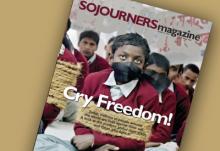Child Abuse

Richard Dawkins, one of the world’s best-known and outspoken atheists, has provoked outrage among child protection agencies and experts after suggesting that recent child abuse scandals have been overblown.
In an interview in The Times magazine on Saturday, Dawkins, 72, he said he was unable to condemn what he called “the mild pedophilia” he experienced at an English school when he was a child in the 1950s.
Referring to his early days at a boarding school in Salisbury, he recalled how one of the (unnamed) masters “pulled me on his knee and put his hand inside my shorts.”
He said other children in his school peer group had been molested by the same teacher but concluded: “I don’t think he did any of us lasting harm.”

We have learned from the crisis at Penn State University and other incidents that have gained national attention that it is not only religious authorities that turn a blind eye to abuses of power. The educational, legal, social service, and policing systems are broken when it comes to protecting children, and others who are vulnerable, from abuse.
Lest we forget our history and think that this is a uniquely 20th and 21st century problem, we need only turn to the Bible. In II Samuel, we are reminded that abuses of power, lust, and rage have always been part of the human experience.
An incident described II Samuel happens not in a religious or educational institution but in a family. It is not an isolated incident; it does not develop out of thin air. It is a case of “like father, like son.” Amnon’s father is King David, who in II Samuel 11, sees Bathsheba bathing and uses his power to have her brought to him so that he may “lay” with her.
It is only two chapters later that we read that Amnon, David’s son, is tormented by the beauty of his half-sister, Tamar. Amnon does not have the authority that his father David has, so he must use trickery instead of sheer power to get what he wants. After Amnon violently “lays” with Tamar, he is filled with hatred for her and forces her to leave his sight. In doing this, he shames her even further.
The scandal is not just that Amnon violates Tamar and the law of Israel, but when Tamar cries and ritually mourns her pain and disgrace she is told to be quiet. Her brother Absalom tells her to stop brooding over the episode. And while Absalom and their father, King David, are angry with Amnon for what he has done to Tamar, neither David nor Absalom even talks to Amnon about it. David does not punish his beloved firstborn son.
Perhaps one positive thing we can say about this story is that Tamar has a name; she is not anonymous like so many other powerless women in biblical stories. Tamar is named and remembered.
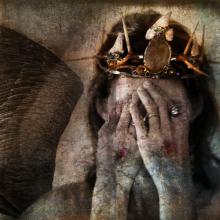
I first became aware of the realities of sexual abuse in the church at the tender age of five. I happened to look at the television screen and witnessed police officers escorting my hand-cuffed youth minister in front of a crowd of reporters screaming questions. The words “YOUTH PASTOR ABUSED CHILDREN” flashed across the television screen.
I was confused and scared. My family comforted and assured me that the pastor had only “hurt” teenage boys and that I was safe. The church hired a new minister and, on the surface, life seemed to resume to normal for our congregation. But as a child I had no idea of the effects of the abuse and its aftermath had on the survivors, their families, and our church community. Many families soon experienced disintegrating marriages, friendships were broken, and faith was lost. One survivor’s family had their home repeatedly vandalized and were forced to move hundreds of miles from our town to escape fellow believers who grew angry with them for filing a lawsuit against the perpetrator.
Church leaders shunned media attention and feared “airing dirty laundry” in public, encouraging members to keep the experience a secret for the sake of the boys and church. As a child, and then a teenager, growing up in an otherwise loving, connected church, I never remember hearing church leaders address this aspect of our shared history in the open. To some of the survivors and the broken-hearted, the silence on this topic was welcome; to others it was deafening. While secrecy was the rule, the legacy of the abuse was real and active in the community. Rather than being cared for with dignity and love, the survivors and their families felt that they were a shameful secret to be whispered about and hidden. I learned as an adult that I was intimately connected with some of the survivors but never knew about their silent pain. I had no idea that I was a participant in a culture of silence and shame that often surrounds sexual abuse and is especially pronounced when boys are abused by men in the church.
Former Penn State Football Coach Jerry Sandusky has been sentenced to no fewer than 30 years in prison, and up to 60 years. Given Sandusky's age, 68, the ruling is basically a life sentence.
From NBC News:
"Sandusky, who was defensive coordinator and for many years the presumed heir-apparent to legendary Penn State football coach Joe Paterno, could have faced as long as 400 years for his convictions on 45 counts of child sexual abuse, but at age 68, he is unlikely ever to leave prison, assuming he loses any appeals."
Yesterday, Sandusky released an audio statement maintaining his innocence and lashing out at his offenders.
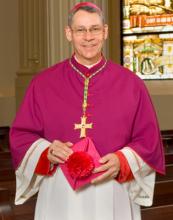
Finn, leader of the Diocese of Kansas City-St. Joseph and an outspoken conservative in the American hierarchy, was convicted of a single misdemeanor count for not telling police that one of his priests, the Rev. Shawn Ratigan, had taken hundreds of lewd images of children in Catholic schools and parishes.
But even as he became the first U.S. bishop ever convicted in criminal court for shielding an abusive priest, Finn’s standing inside the church appears uncertain, and the subject of intense debate.
Should he stay or should he go? Finn has indicated that he wants to tough it out.
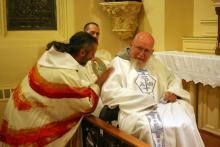
The Rev. Benedict Groeschel, a well-known Catholic author and television personality, has given up his longtime spot on the conservative cable network EWTN following comments in which he appeared to defend clergy who abuse children while blaming some victims.
“Father Benedict has led a life of tremendous compassion and service to others and his spiritual insights have been a great gift to the EWTN family for many years. We are profoundly grateful to him and assure him of our prayers,” Michael P. Warsaw, head of EWTN Global Catholic Network said in announcing Groeschel’s decision to step down.
In his statement on Monday Warsaw also asked EWTN viewers “to pray for all those who have been affected by this painful situation and in particular those who have been victims of sexual abuse.”
The U.S. Catholic bishops' point man on sexual abuse has said that the hierarchy's credibility on fixing the problem is "shredded" and that the situation is comparable to the Reformation, when “the episcopacy, the regular clergy, even the papacy were discredited.”
Bishop R. Daniel Conlon of Joliet, Ill., last month told a conference of staffers who oversee child safety programs in American dioceses that he had always assumed that consistently implementing the bishops’ policies on child protection, “coupled with some decent publicity, would turn public opinion around.”
A federal judge on Monday dismissed the Vatican from a lawsuit filed by a former Portland teenager who says he was sexually abused by a pedophile priest who was transferred from Ireland to Chicago and then Portland in an alleged church effort to hide his past.
U.S. District Judge Michael Mosman of Portland said the Vatican didn't employ the Rev. Andrew Ronan, who — according to the lawsuit — molested the teenager in 1965 and 1966. Mosman's ruling means the Vatican can't be held financially liable for the abuse.
"It's clearly a disappointment, but we're definitely not discouraged," said Jeff Anderson, the Minnesota attorney who is representing the victim, listed in the suit as John V. Doe.
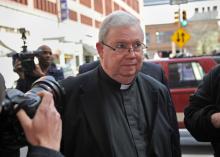
Monsignor William J. Lynn, the first U.S. Catholic official convicted for covering up the sexual abuse of children, was sentenced to 3-6 years in prison on Tuesday.
Lynn, 61, has been in jail since his June 22 conviction on endangering the welfare of a child. Prosecutors were seeking the maximum penalty, up to seven years.
“You knew full well what was right, Monsignor Lynn, but you chose wrong,” said Common Pleas Court Judge M. Teresa Sarmina.
Sarmina told Lynn that he enabled “monsters in clerical garb … to destroy the souls of children, to whom you turned a hard heart.”
Lynn was head of priest personnel for a dozen years and was one of the highest-ranking officials in the Archdiocese of Philadelphia.
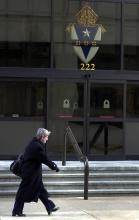
Ten years ago, the Roman Catholic sex abuse scandal dominated the headlines with horrific stories of priests preying on vulnerable youths and a church hierarchy more concerned with protecting clergy instead of kids.
Now, it's back. A Philadelphia jury is deliberating whether, for the first time, a high-ranking church official will be held criminally accountable.
However the jury rules, the case carries symbolic freight far heavier than the grim details in the trial of Monsignor William Lynn, former secretary for the clergy in the Archdiocese of Philadelphia. It revives the breadth and depth of the abuse crisis, its extraordinary costs and unending frustrations.
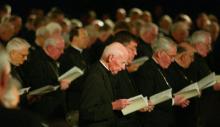
When the nation’s Catholic bishops gather in Atlanta next week (June 13-15) for their annual spring meeting, a top agenda item will be assessing the reforms they adopted 10 years ago as revelations of widespread sexual abuse of children by priests consumed the church.
The policy package they approved at that 2002 meeting in Dallas was known as the Charter for the Protection of Children and Young People, or the Dallas charter, for short. With it, the bishops vowed to finally put an end to the abuse and secrecy. They also pledged to help raise awareness about the plague of child abuse in society.
But is anything different – in the church or in the country — 10 years later? Here’s a look at what has changed, and what has not.
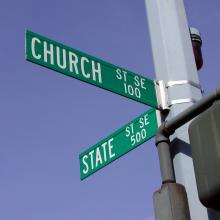
The sovereignty of religion in the United States is a thorny issue when it comes to state powers. But most Americans can agree that there are lines that even the Church cannot cross.
The problem is that sometimes that realization comes too late.
Sixteen-year-old Austin Sprout is the most recent victim of such religious transgressions. Oregon’s Register-Guard recently reported that Sprout’s parents declined medical care for their son, opting instead for prayer to ensure his recovery from an undisclosed but commonly preventable illness. He died in spite of their faithfulness.
Sprout’s father, Brian, reportedly died of sepsis five years ago when the family refused medical treatment for his medical injury, opting for faith-based healing. The family attends The General Assembly Church of the First Born, a congregation the Huffington Post notes is “known for their practice of faith healing.”
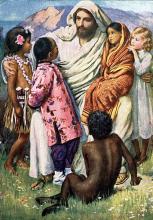
In Mathew 25, he allows no excuses, personal or institutional.
“As you have done it to the least of these, you have done it to me,” Jesus says without qualification. Apply that text to this terrible exploitation at Penn State and it certainly speaks explicitly to the most vulnerable children who have been so horribly abused there.
As it was done to them, it was done to Christ himself, the very Son of God. This famous text is one of the few passages of judgment in the New Testament.
Judgment is now needed at Penn State and beyond about how we continue to allow wealth, power, institutional protections, and cultural complicity to aid, abet, and enable the evil abuse of our most vulnerable children.
I couldn't bear to watch any of the coverage of the Casey Anthony murder trial. I heard snippets of information on occasion: intimations of incest; a car that "smelled of death"; fist fights breaking out as the curious and obsessed (or the profoundly bored?) tried to get a seat in the Florida courtroom.
